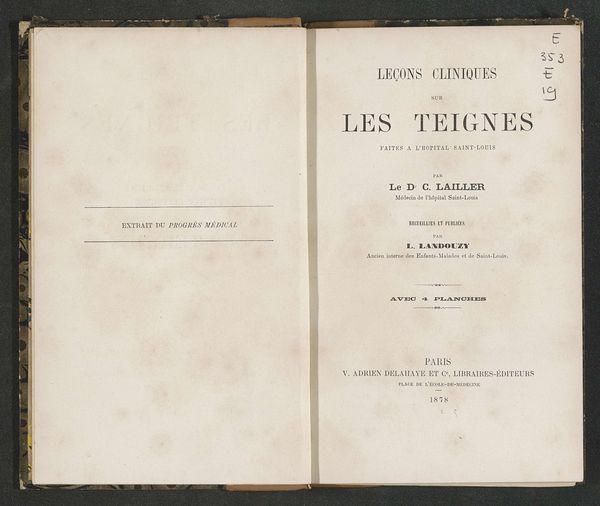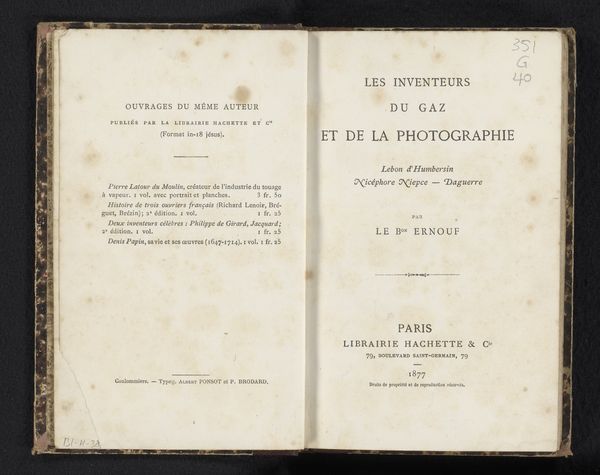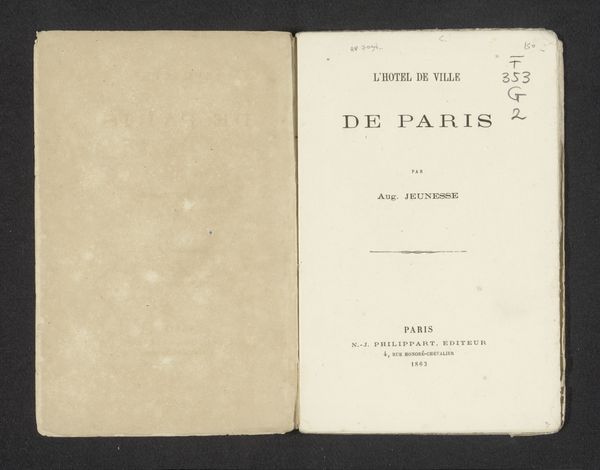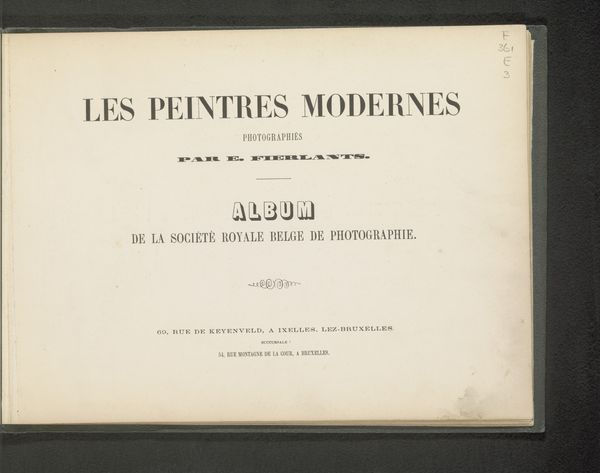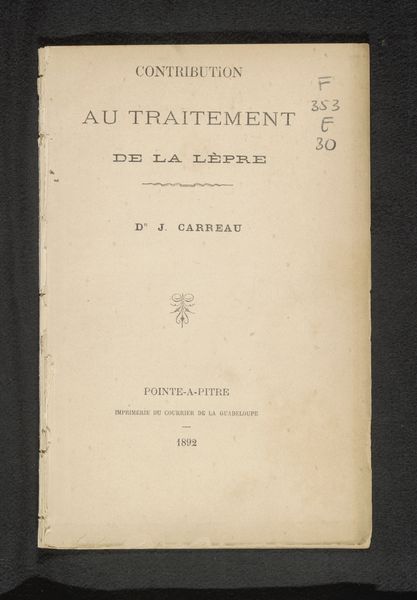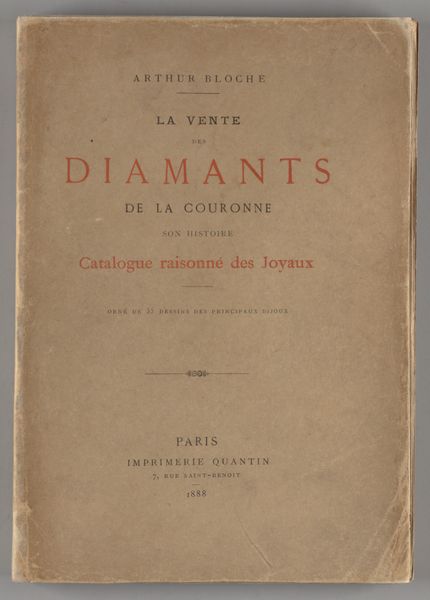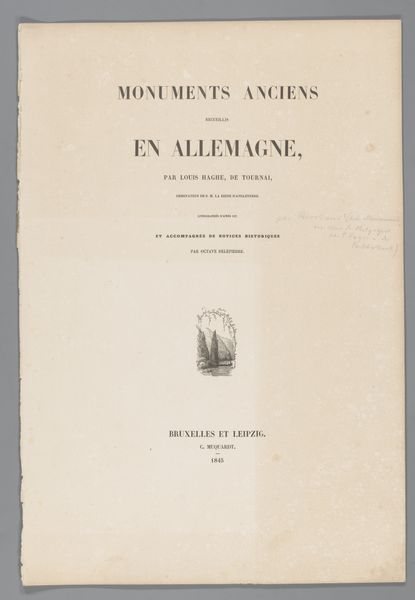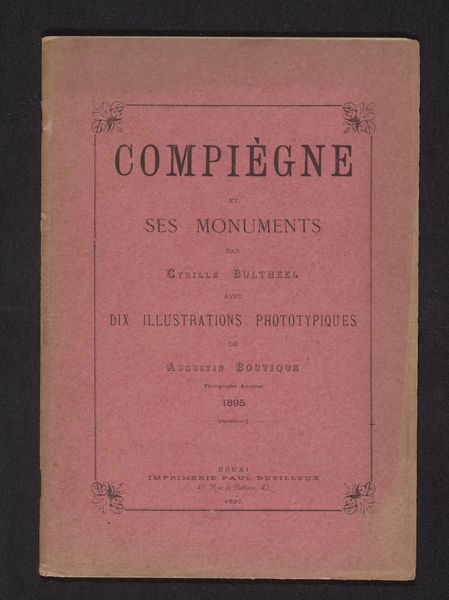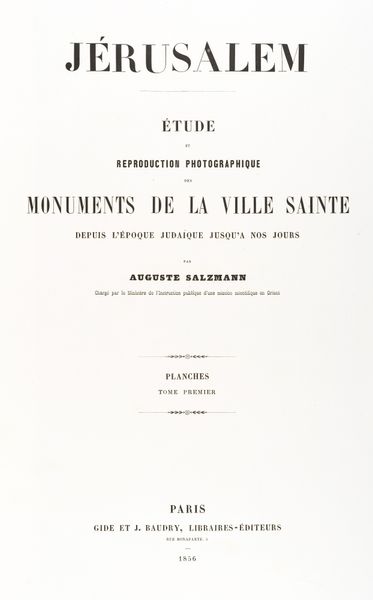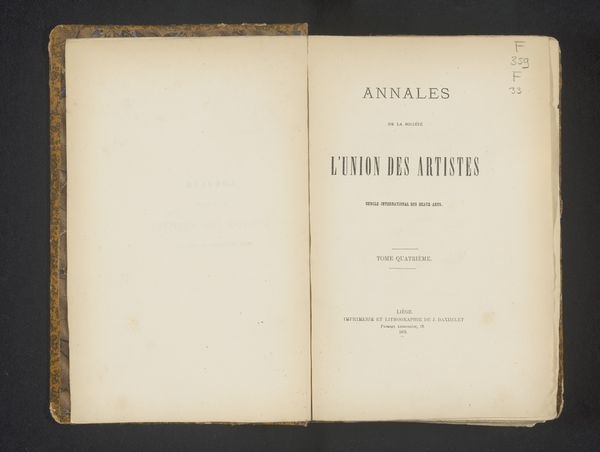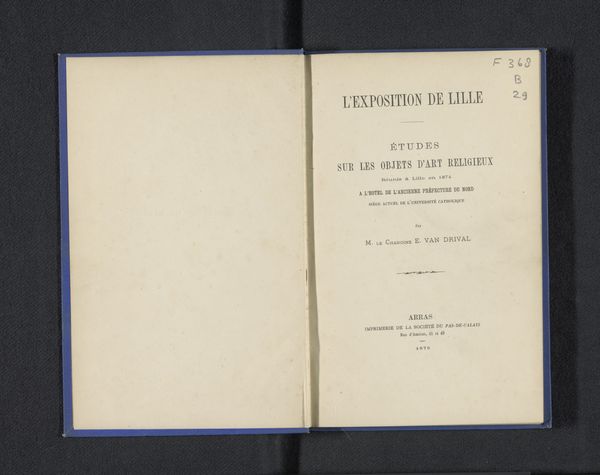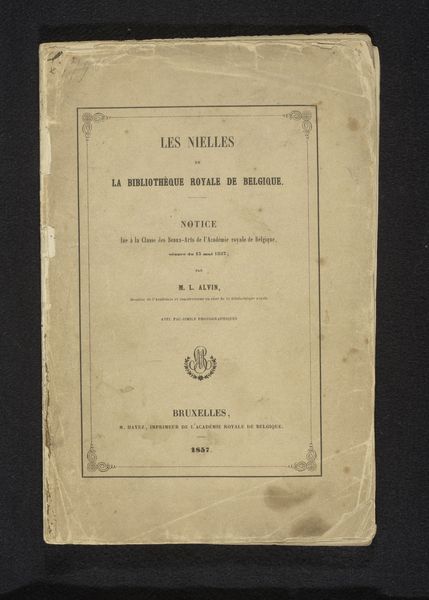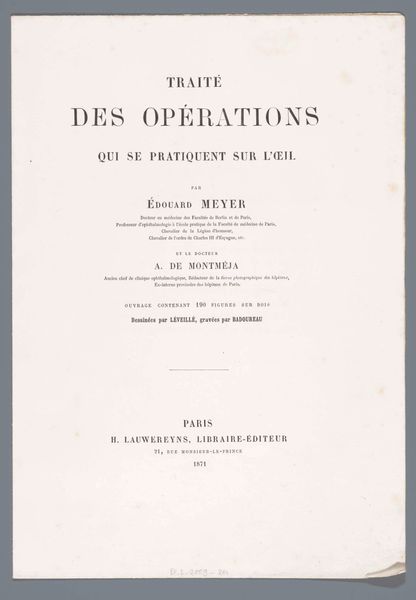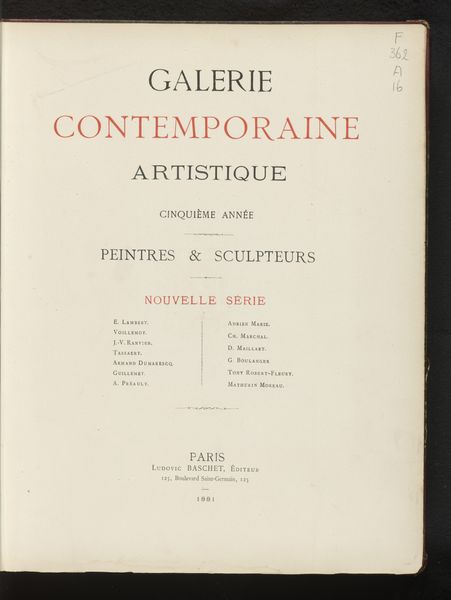
print, typography, poster
#
art-nouveau
# print
#
typography
#
symbolism
#
poster
Dimensions: cix, 164 pages, [100] leaves of plates : illustrations (some color) ; Height: 11 13/16 in. (30 cm)
Copyright: Public Domain
Curator: Well, here we have "Les Cathédrales de France," a poster designed by Auguste Rodin, dating back to 1914, now residing at the Metropolitan Museum of Art. It is both typography and print, employing symbolism and embodying Art Nouveau sensibilities. Editor: Immediately, what strikes me is its austerity. It’s a visual experience relying so heavily on the texture of paper and the deliberate placement of typography; it has a certain minimalist impact even though it’s signaling the grand subject matter of Cathedrals. Curator: Absolutely, and it is the book cover design for a rather unique volume focusing on Rodin’s architectural studies. The focus on typography, from font choices, size, and spacing are very careful here, creating the poster's striking impact through the manipulation of industrial processes in bookbinding. It underscores his broader view of how materials were produced, distributed and consumed. Editor: And in that context, what does it tell us about Rodin's cultural standing and influence? The design almost implies a guarantee of quality simply from his name, emblazoned across the top. One wonders about the dynamics between Rodin, the publisher, and the intended audience. It reflects on who art publications and the very notion of artistic authority in pre-war Europe. Curator: Precisely. The poster is itself a commodity but serves as the threshold to other commodity objects. In the history of book covers, it really marks an important shift in expectations of material handling, making, and distribution that we’ve come to now take for granted. Editor: It does highlight, too, the power of an institution to canonize an artist. By placing this advertisement within the Met’s collection, the poster, the artist, and the represented architectural structures, the poster elevates them beyond their commercial origin, adding layers of meaning for viewers to unpack. Curator: Agreed. The act of viewing here, becomes not just appreciation, but of analysis of both intent, design, audience, impact and afterlife within the context of cultural memory and institutional values. Editor: Well, it has made me think quite differently about Rodin and the social implications around the marketing of artwork itself, something very easy to forget.
Comments
No comments
Be the first to comment and join the conversation on the ultimate creative platform.
